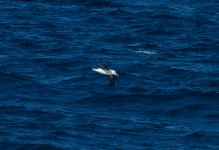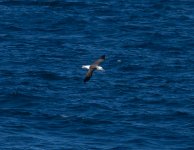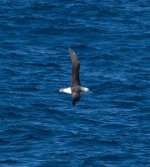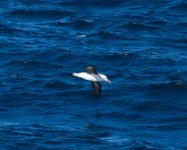Dimitris
Birdwatcher in Oz
Hello all,
Today I photographed this interesting bird during a two hour sea watching trip.
It was seen alongside adult Black-browed Albatross and compared to them it was slightly smaller and perhaps a little more compact. Flight action was intermediate between that of Black-browed and Indian Yellow-nosed Albatross.
Based on the dark underwing and beak pattern I believe this bird to either be an oddly patterned 3rd year Black-browed or a 3 rd year Grey-headed.
In addition to ~60 BB albatross and this bird, there was 1 Shy Albatross, 2 Indian Yellow-nosed Albatross, 2 Giant Petrel sp, 1 Fluttering Shearwater and 1,000ds of Prions too far out at sea to identify.
I have more pictures of the bird (it was about 1 k from shore) and I've just altered the exposure and noise from the images. I have more images but they don't show anything more.
Any help is appreciated.
D.
Today I photographed this interesting bird during a two hour sea watching trip.
It was seen alongside adult Black-browed Albatross and compared to them it was slightly smaller and perhaps a little more compact. Flight action was intermediate between that of Black-browed and Indian Yellow-nosed Albatross.
Based on the dark underwing and beak pattern I believe this bird to either be an oddly patterned 3rd year Black-browed or a 3 rd year Grey-headed.
In addition to ~60 BB albatross and this bird, there was 1 Shy Albatross, 2 Indian Yellow-nosed Albatross, 2 Giant Petrel sp, 1 Fluttering Shearwater and 1,000ds of Prions too far out at sea to identify.
I have more pictures of the bird (it was about 1 k from shore) and I've just altered the exposure and noise from the images. I have more images but they don't show anything more.
Any help is appreciated.
D.







